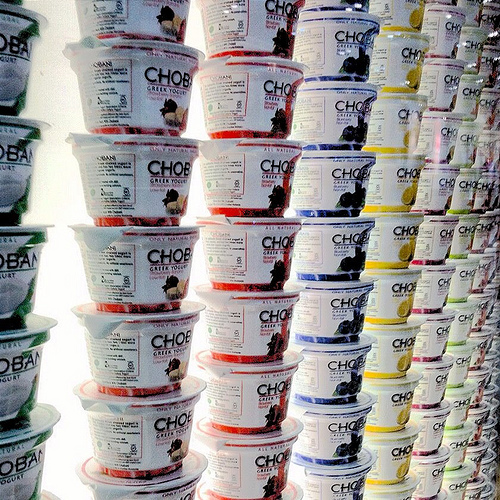Bad news, Fage fans and Chobani lovers (we’re gonna call you “Chobuccaneers”). All that Greek yogurt you’re eating is creating a toxic byproduct: gallons upon gallons upon gallons of acid whey.
This is the same whey that Miss Muffett so enjoyed. Apparently she was a fish-hating sociopath in addition to being an arachnophobe. Modern Farmer reports:
It’s a thin, runny waste product that can’t simply be dumped. Not only would that be illegal, but whey decomposition is toxic to the natural environment, robbing oxygen from streams and rivers. That could turn a waterway into what one expert calls a “dead sea,” destroying aquatic life over potentially large areas. Spills of cheese whey, a cousin of Greek yogurt whey, have killed tens of thousands of fish around the country in recent years.
No one’s quite sure what to do with all this whey, and the industry isn’t reporting exactly where it’s all going. Ideas for disposing of it include:
- feed it to cows
- feed it to babies
- feed it to bodybuilders
The latter two ideas involve separating out the useful protein and lactose from the whey before using it. But they need to figure something out, because you know America’s not about to give up Key Lime Crumble Chobani. Mmm. Chobuccaneers, attack!
Update: Chobani sent us this statement: “Right now, we choose to return whey to farmers, most of whom use it as a supplement to their livestock feed. Some is used as a land-applied fertilizer but only at farms that have nutrient management plans in place with the state environmental conservation agency. A small percentage is also sent to community digesters, where the whey is used to produce energy.”




